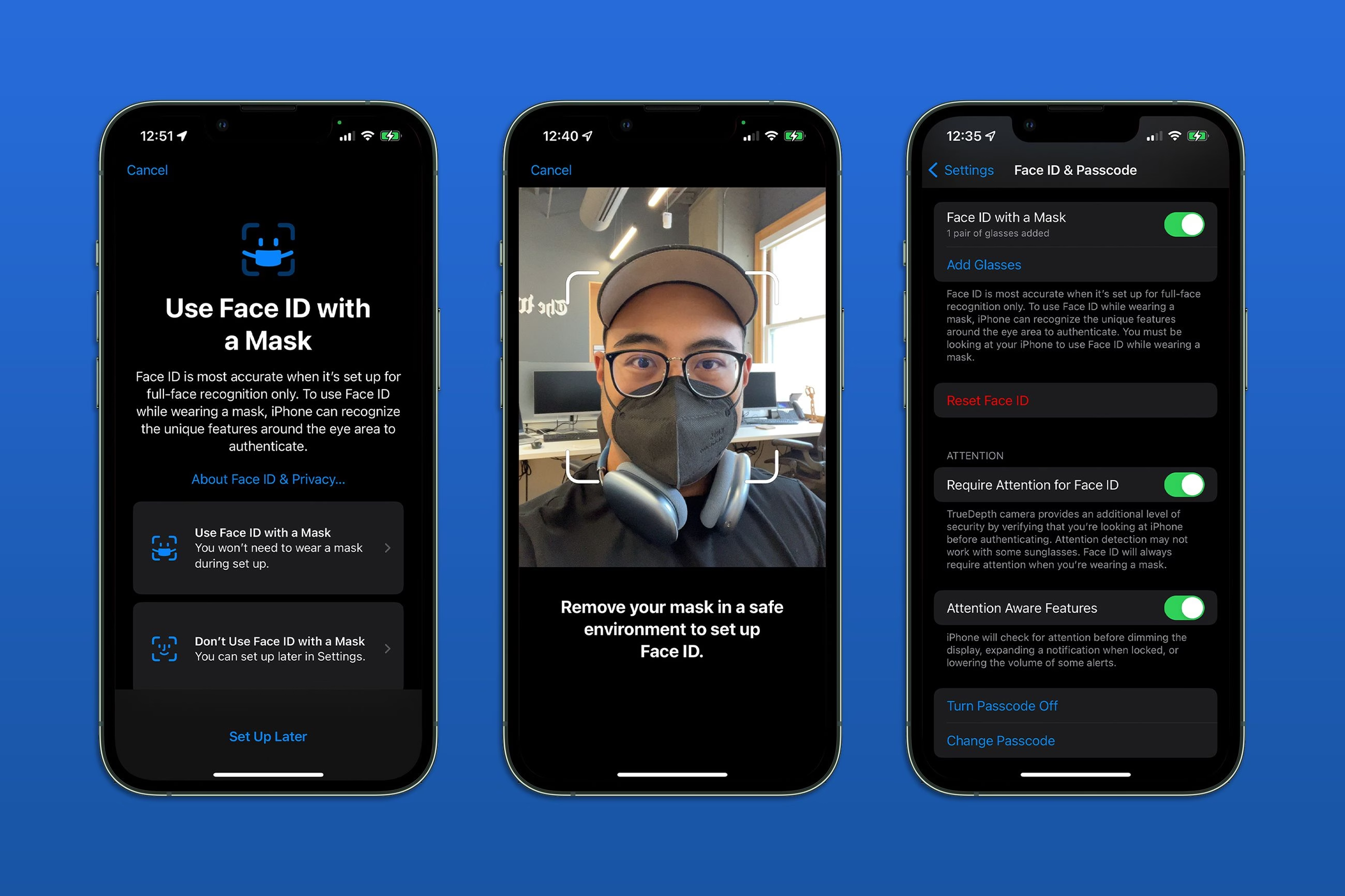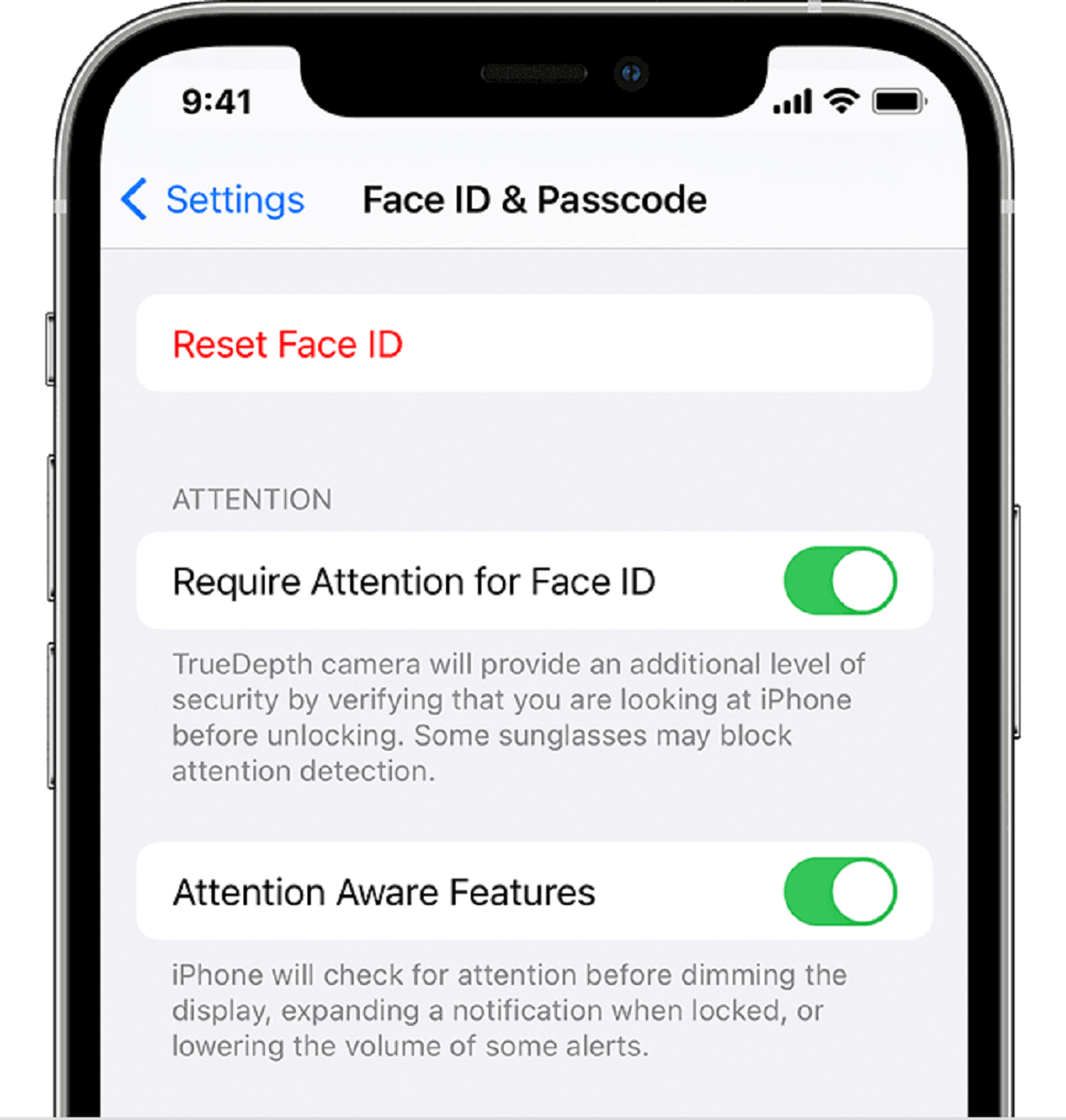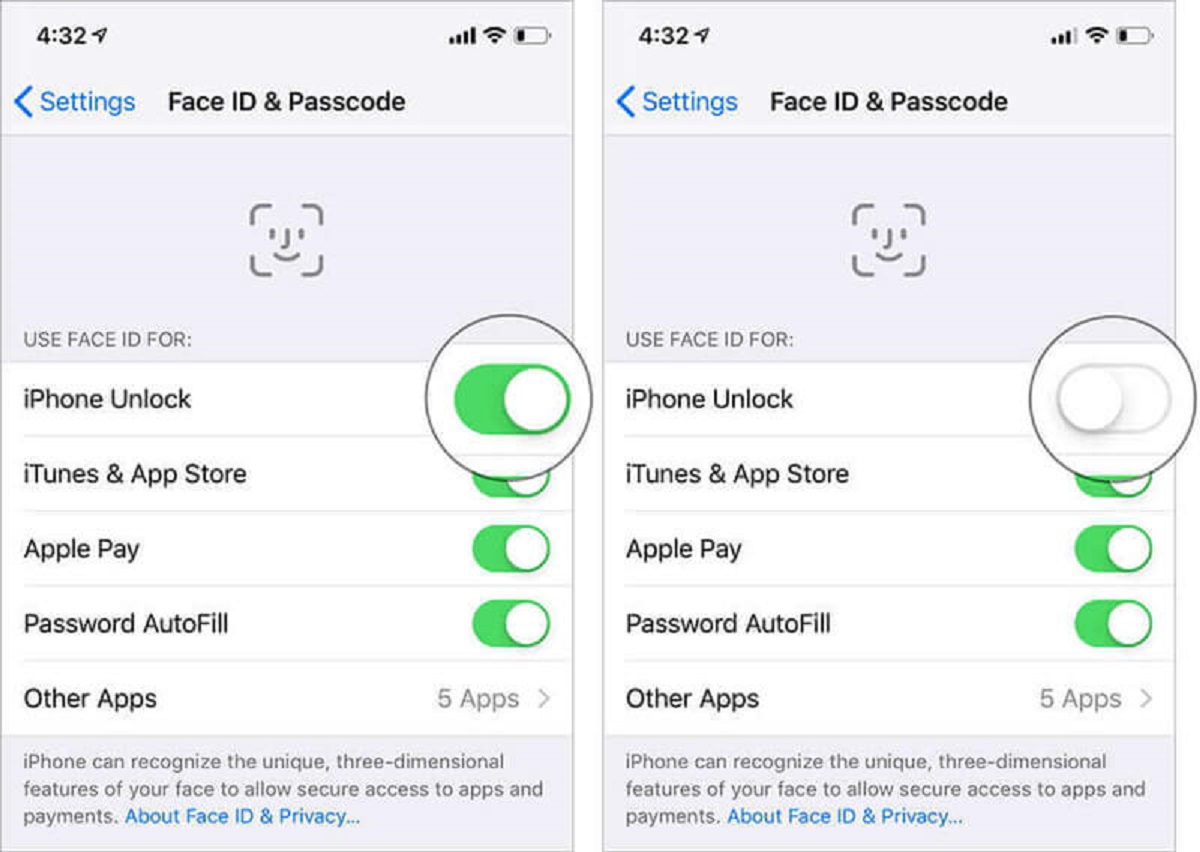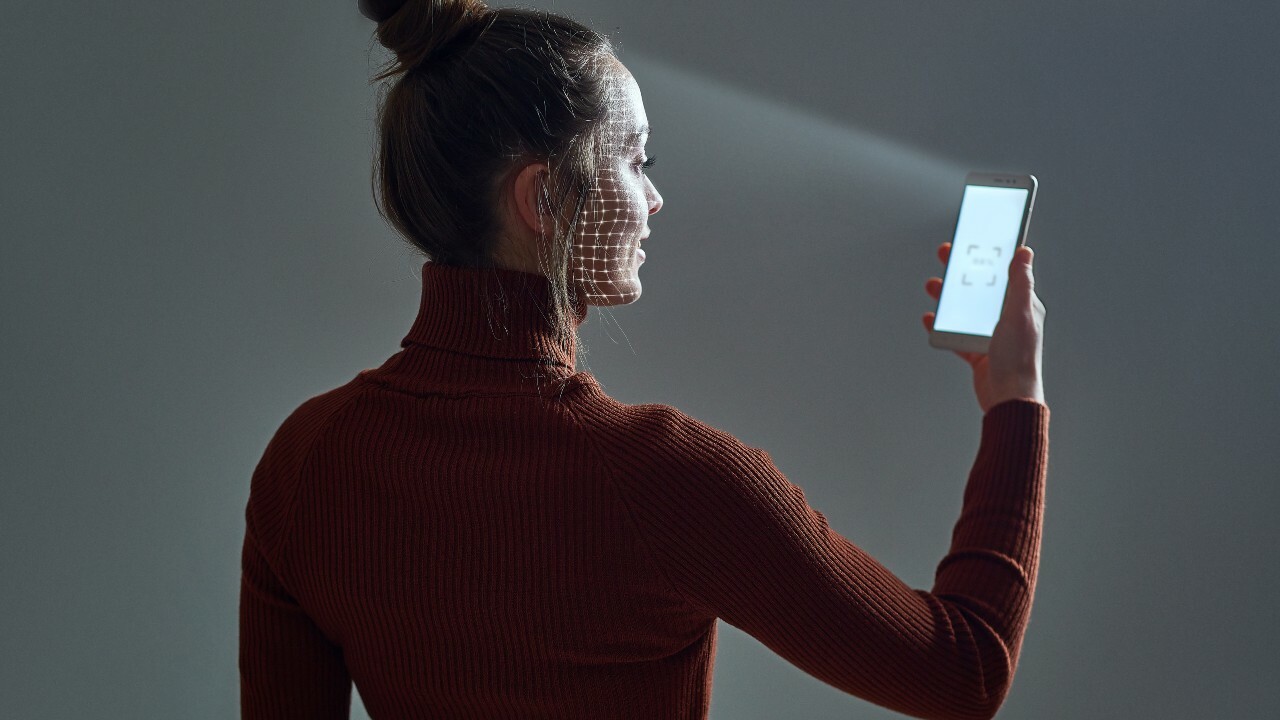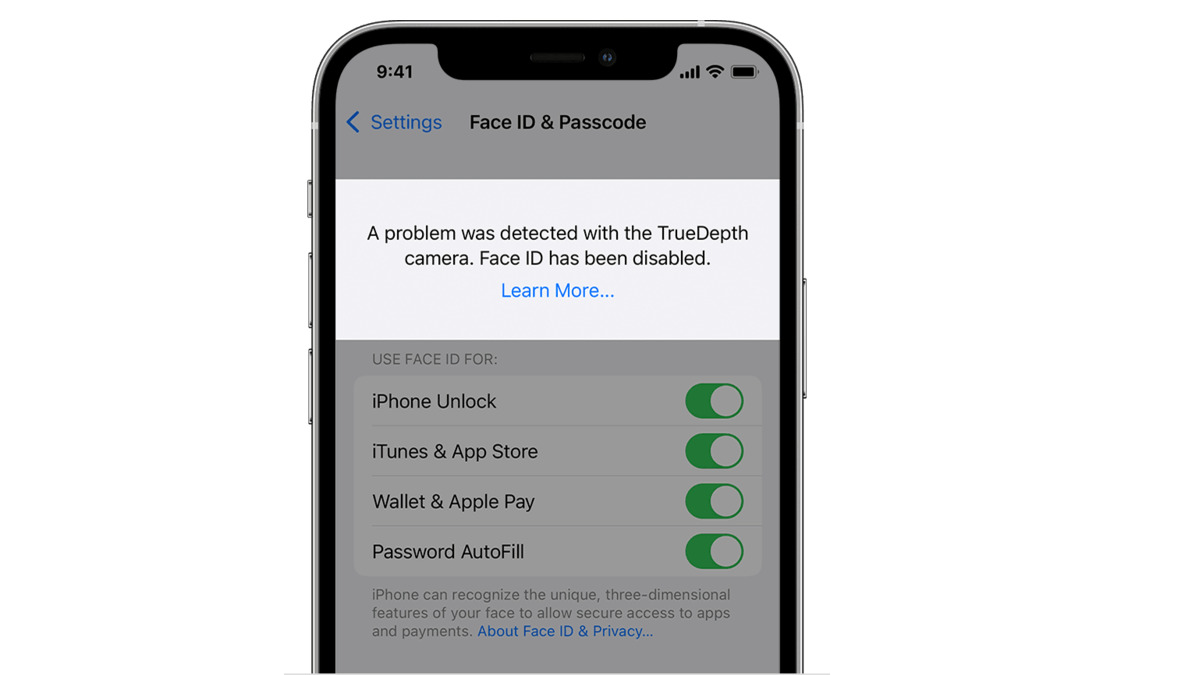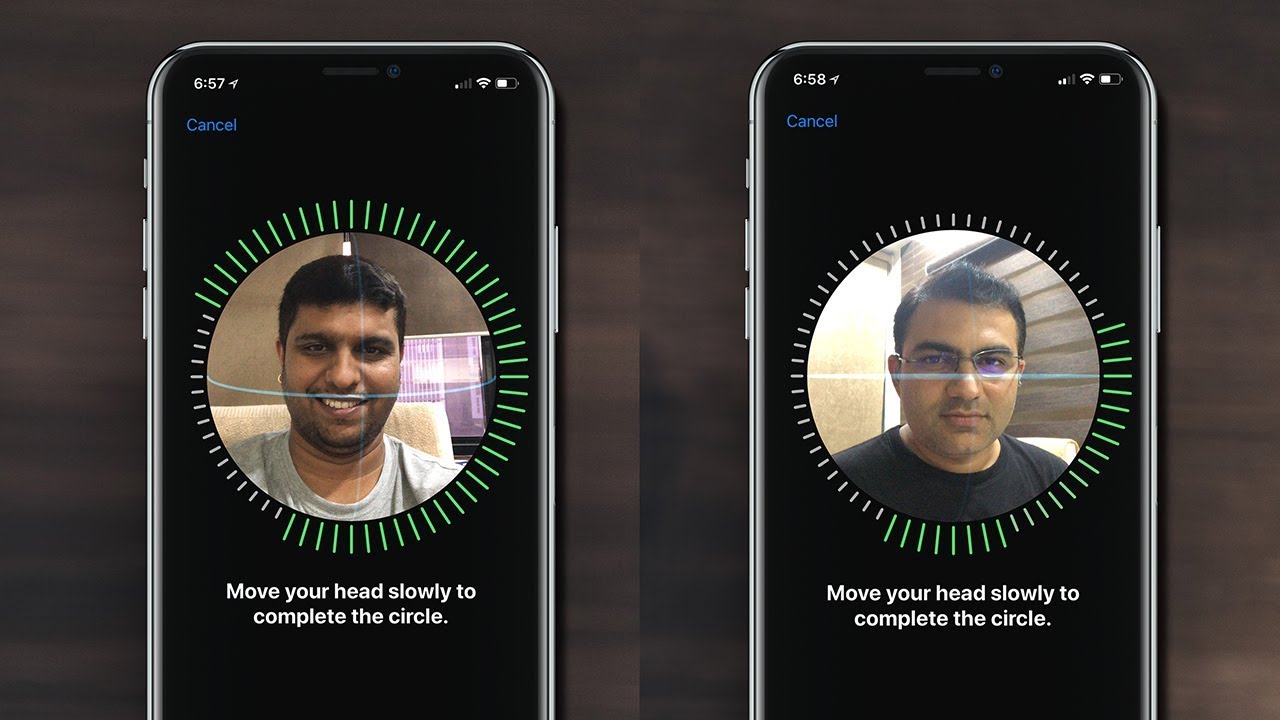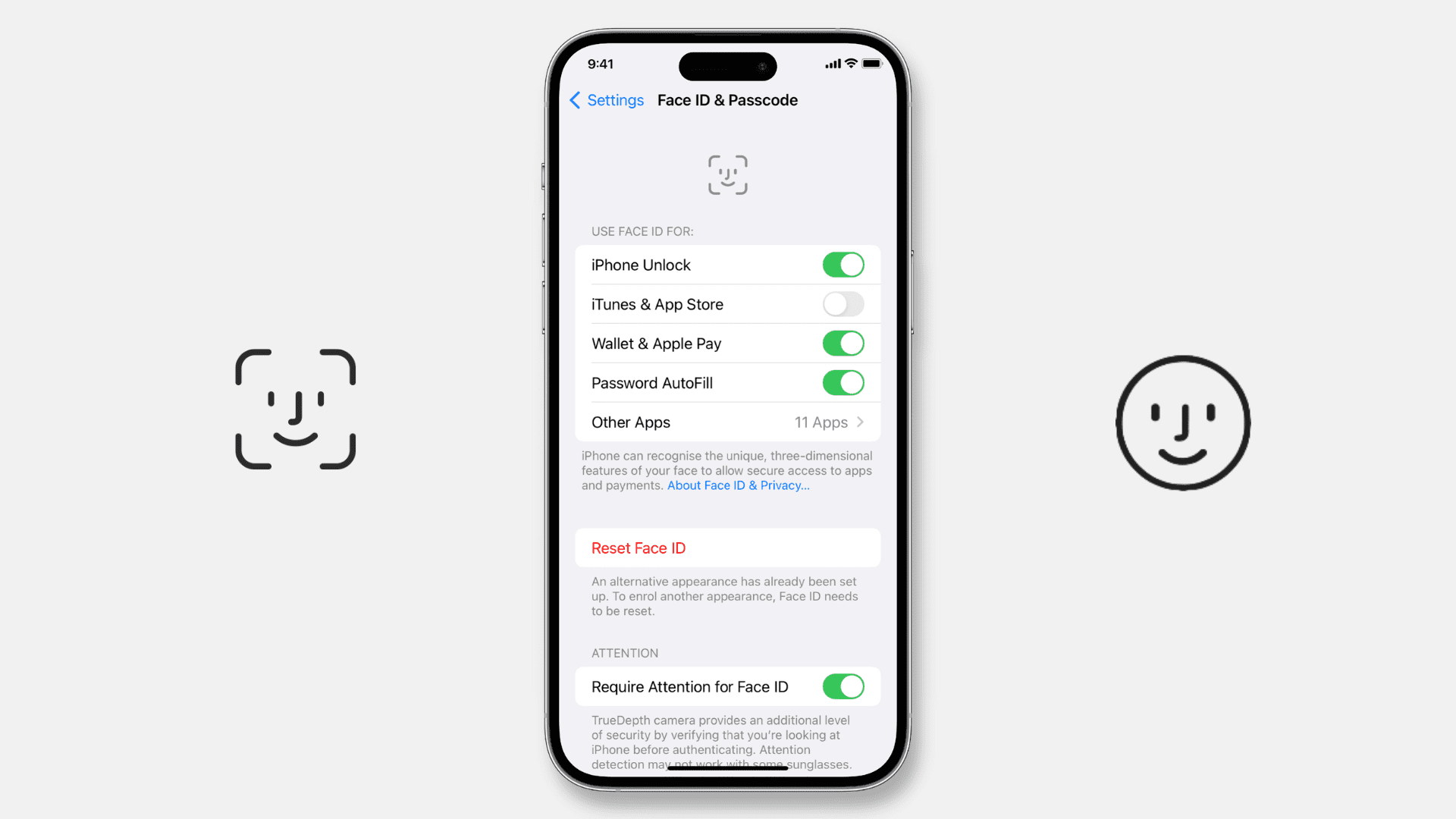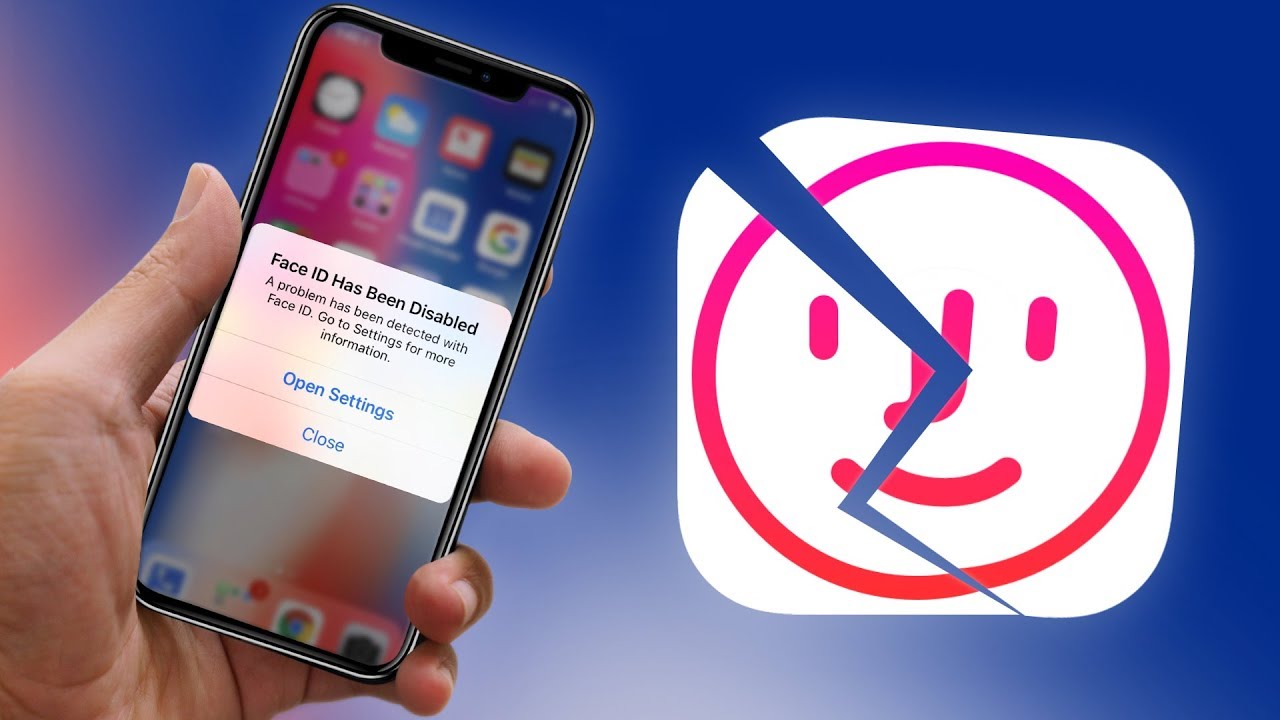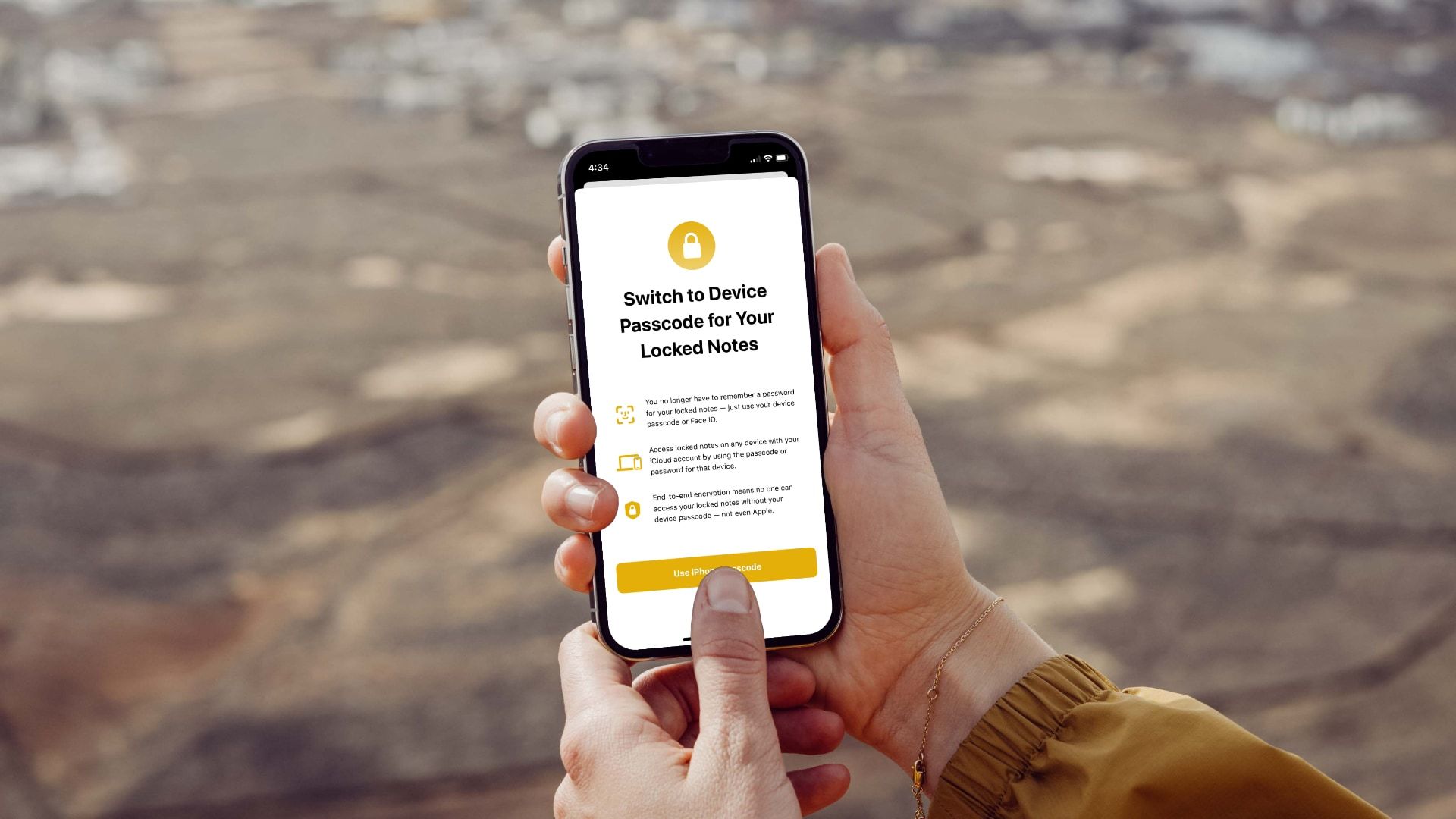Introduction
Welcome to the world of modern technology, where our smartphones have become an extension of ourselves. With the emergence of face recognition technology, securing our devices has become effortless and convenient. However, the global pandemic has presented a unique challenge when it comes to using Face ID with a face mask. Thankfully, Apple has recognized this issue and introduced new features and updates to enhance the usability of Face ID with a mask on the iPhone.
In this article, we will guide you through the process of setting up Face ID with a mask on your iPhone and provide some troubleshooting tips to ensure a seamless experience. Whether you are a regular user of Face ID or a newbie, these tips will help you make the most out of your device’s security features even while wearing a mask.
Before diving into the setup process, it is crucial to ensure that your iPhone’s software is up to date. Apple frequently releases updates that not only introduce new features but also address bug fixes and security improvements. Keeping your device updated will ensure you have access to the latest enhancements for Face ID.
Now, let’s explore the steps to set up Face ID with a mask on your iPhone and make the process of unlocking your device more convenient and hassle-free.
Ensure Software Updates are Current
Before proceeding with setting up Face ID with a mask on your iPhone, it is crucial to ensure that your device’s software is up to date. Apple regularly releases updates that not only introduce new features but also address bug fixes and security improvements. Keeping your device updated will ensure that you have access to the latest enhancements for Face ID.
To check if your iPhone has the latest software update, follow these steps:
- Open the Settings app on your iPhone.
- Scroll down and tap on “General.”
- Select “Software Update.”
- If an update is available, tap on “Download and Install.” You may need to connect your iPhone to Wi-Fi and ensure it has sufficient battery charge.
- Wait for the update to download and follow the on-screen instructions to install it.
By keeping your iPhone’s software up to date, you can take advantage of any improvements or optimizations that Apple has made specifically for Face ID. These updates may include enhancements to recognition algorithms or adjustments to improve the accuracy of Face ID while wearing a mask.
Additionally, updating your device’s software ensures that you have the latest security measures in place, protecting your personal information and keeping your device secure. With the ever-evolving landscape of technology, it is essential to stay vigilant and take advantage of the latest updates to keep your iPhone running smoothly and securely.
Set Up Face ID with Mask On
Setting up Face ID with a mask on your iPhone is a straightforward process. The initial set up of Face ID requires scanning your face without a mask, but you can register an alternate appearance with a mask on to ensure Face ID recognition while wearing it.
To set up Face ID with a mask on your iPhone, follow these steps:
- Open the Settings app on your iPhone.
- Scroll down and tap on “Face ID & Passcode.”
- Enter your passcode to proceed.
- Select “Set Up Face ID.”
- Follow the on-screen instructions and position your face within the frame, removing any face coverings, including masks, during the initial setup.
- Once the initial face scan is complete, tap on “Set Up an Alternate Appearance.”
- Put on your face mask and position your face within the frame.
- Move your head slightly to ensure the iPhone captures your face from various angles.
- Once the alternate appearance is set up, Face ID will recognize your face even when you are wearing a mask.
It is important to note that during the initial set up without a mask, you need to ensure that your entire face is visible to the camera. This includes your forehead, eyes, nose, and mouth. It is also recommended to remove any accessories such as hats or glasses that may obstruct the view of your face.
By setting up Face ID with a mask on, you can conveniently unlock your iPhone without the need to remove your mask every time. This feature enhances the usability of Face ID in situations where wearing a mask is necessary, such as during the ongoing COVID-19 pandemic, without compromising the security of your device.
Position Face Properly during Initial Set Up
During the initial set up of Face ID, it is crucial to position your face properly within the frame to ensure accurate recognition. This is particularly important when setting up Face ID with a mask on, as the mask can sometimes obscure parts of your face.
Follow these guidelines to correctly position your face during the initial set up of Face ID:
- Make sure you are in a well-lit environment. Adequate lighting helps the iPhone’s TrueDepth camera to capture the details of your face accurately.
- Hold your iPhone at a comfortable distance, approximately 10 to 20 inches away from your face.
- Ensure that your entire face is visible to the camera. This includes your forehead, eyes, nose, and mouth.
- Avoid tilting your head or looking at the iPhone from extreme angles. Keep your face straight and centered within the frame.
- Hold the iPhone steady while the scanning process is underway. Any movement or shaking of the device may affect the quality of the face scan.
By following these guidelines, you can maximize the accuracy and reliability of Face ID recognition. Properly positioning your face ensures that the iPhone captures all the necessary details, enabling seamless and secure unlocking of your device.
In situations where you are wearing a mask during the initial set up, it is even more important to position your face properly. Ensure that the mask does not cover any essential facial features, especially your eyes and the lower half of your face, including your nose and mouth. This will help Face ID to create an accurate reference for future recognition.
Remember, by positioning your face properly during the initial set up of Face ID, you can enjoy the convenience and security of effortless unlocking, even while wearing a mask.
Register an Alternate Appearance with Mask On
Registering an alternate appearance with a mask on is a crucial step to ensure that Face ID recognizes your face even when you are wearing a mask. By doing so, you can conveniently unlock your iPhone without the need to remove your mask each time.
To register an alternate appearance with a mask on, follow these steps:
- Open the Settings app on your iPhone.
- Scroll down and tap on “Face ID & Passcode.”
- Enter your passcode to proceed.
- Tap on “Set Up an Alternate Appearance.”
- Put on your face mask.
- Position your face within the frame and make sure the mask is properly fitted.
- Move your head slightly to allow the iPhone to capture your face from various angles.
- Once the scan is complete, your alternate appearance with the mask on is registered.
Registering an alternate appearance with a mask on ensures that Face ID adapts to your changing facial features, taking into consideration the mask as part of your recognized appearance. It enhances the accuracy and reliability of Face ID recognition, allowing you to unlock your iPhone effortlessly while maintaining the necessary protection.
It’s worth noting that you can register multiple alternate appearances with masks on if needed. For example, if you regularly wear different types of masks, you can register each of them as an alternate appearance to ensure seamless unlocking in any situation.
By registering an alternate appearance with a mask on, you can make the most out of Face ID’s capabilities and enjoy the convenience of unlocking your iPhone while prioritizing safety and security.
Enable Face ID Recognition While Wearing a Mask
Enabling Face ID recognition while wearing a mask allows you to effortlessly unlock your iPhone without needing to remove your mask. Apple has introduced a convenient feature that recognizes when you are wearing a mask and automatically switches to passcode entry, ensuring a seamless user experience.
To enable Face ID recognition while wearing a mask on your iPhone, follow these steps:
- Open the Settings app on your iPhone.
- Scroll down and tap on “Face ID & Passcode.”
- Enter your passcode to proceed.
- Scroll down to the section titled “Unlock With Face ID.”
- Toggle the switch next to “Unlock with Face ID while wearing a mask” to enable the feature.
Once enabled, whenever Face ID detects that you are wearing a mask, it will automatically switch to the passcode entry screen. This feature eliminates the need to repeatedly try and fail with Face ID recognition while wearing a mask, saving you time and frustration.
Keep in mind that enabling this feature does not compromise the security of your device. The passcode is a secure method of unlocking your iPhone, and Face ID will resume its regular functioning once the mask is removed or when you are in a situation where the mask is not necessary.
Enabling Face ID recognition while wearing a mask ensures a smooth user experience, providing a seamless transition to passcode entry when needed. With this feature enabled, you can confidently use your iPhone while wearing a mask without any interruptions.
Adjust Number of Required Face ID Attempts
By default, Face ID requires one successful facial recognition to unlock your iPhone. However, you have the option to adjust the number of required Face ID attempts before the device prompts for a passcode. This feature can be particularly helpful when using Face ID with a mask on, as it allows for more flexibility and convenience.
To adjust the number of required Face ID attempts on your iPhone, follow these steps:
- Open the Settings app on your iPhone.
- Scroll down and tap on “Face ID & Passcode.”
- Enter your passcode to proceed.
- Scroll down to the section titled “Require Face ID.”
- Select the desired option:
- “Immediately” requires a successful Face ID recognition for every unlock.
- “After 1 hour” allows for one successful Face ID recognition per hour.
- “After 4 hours” allows for one successful Face ID recognition per four hours.
- “After 8 hours” allows for one successful Face ID recognition per eight hours.
Adjusting the number of required Face ID attempts gives you more flexibility and convenience, especially when wearing a face mask. For example, if you frequently need to access your iPhone while wearing a mask throughout the day, setting a longer time interval between required Face ID recognitions can save you from repeatedly entering your passcode.
Keep in mind that increasing the time interval between required Face ID attempts may slightly decrease the overall security of your device. However, the convenience it provides can greatly enhance the user experience, especially in situations where wearing a mask is necessary.
By adjusting the number of required Face ID attempts, you can strike a balance between security and convenience when using Face ID with a mask on your iPhone.
Improve Face ID Performance with Mask On
While Face ID with a mask on works seamlessly for most users, there are a few tips and tricks you can follow to further improve its performance. These suggestions can help maximize the accuracy and speed of Face ID recognition, ensuring a smooth and convenient unlocking experience.
Here are some ways to improve Face ID performance with a mask on:
- Make sure your iPhone’s front-facing camera and TrueDepth sensors are clean. Use a soft, lint-free cloth to wipe away any dirt or smudges on the camera lens or sensor area.
- Ensure that your mask fits securely and covers only the necessary parts of your face. A loose-fitting mask or one that covers too much of your face may obstruct the necessary facial features needed for Face ID recognition.
- Position your face in the same way you did during the initial setup of Face ID. This includes aligning your face within the frame, ensuring that your eyes, nose, and mouth are clearly visible.
- Hold your iPhone at a comfortable distance and maintain a steady hand while unlocking. This helps the TrueDepth camera capture a clear and accurate image of your face.
- Minimize any excessive movement or shaking of your iPhone while Face ID is attempting to recognize your face. A stable device reduces the chances of errors or failed recognition.
- Try removing and repositioning your mask if Face ID consistently fails to unlock your device. Sometimes slight adjustments in mask position can make a significant difference in recognition accuracy.
- Consider registering multiple appearances with different types of masks if you frequently switch between them. This provides Face ID with more references and improves its ability to recognize your face with various mask styles.
By following these tips, you can enhance the performance of Face ID while wearing a mask, ensuring a smoother and more consistent unlocking experience. However, it is important to note that Face ID performance may vary depending on factors such as mask type, lighting conditions, and variations in facial features.
Remember, while Face ID provides a convenient and secure unlocking method, it is always a good practice to have a passcode set up as a fallback option in case Face ID encounters any difficulties.
Troubleshooting Tips
While Face ID with a mask on is designed to be reliable and convenient, you may encounter some issues or challenges during regular use. Here are a few troubleshooting tips to help you overcome common Face ID-related problems while wearing a mask:
- Ensure that your mask is properly fitted and covers the necessary parts of your face. A loose or ill-fitting mask can obstruct Face ID recognition.
- Make sure you are holding your iPhone at a comfortable distance and positioning your face within the frame as you did during the initial Face ID setup.
- Check for any obstructions such as dirt, smudges, or scratches on your iPhone’s front-facing camera or TrueDepth sensors. Use a soft, lint-free cloth to clean the camera lens and sensor area.
- If Face ID fails to recognize you with a mask on, try entering your passcode manually to unlock your iPhone. This can help Face ID recalibrate and improve its accuracy for future attempts.
- Consider resetting Face ID by going to “Settings” > “Face ID & Passcode” and selecting “Reset Face ID.” Then, follow the instructions to set it up again, ensuring that your mask is on during the alternate appearance registration step.
- If you frequently switch between different masks, try registering each mask as a separate alternate appearance. This can improve Face ID recognition by providing more reference points for your different mask styles.
- Ensure that your iPhone’s software is up to date by regularly checking for software updates. New updates may contain bug fixes or improvements specifically related to Face ID functionality.
- Consider using an alternative unlock method, such as a passcode or Touch ID (if available on your device), if you consistently experience difficulties with Face ID recognition while wearing a mask.
If you continue to experience persistent issues with Face ID, even after following these troubleshooting tips, it may be worth reaching out to Apple support for further assistance. They can provide personalized guidance and solutions based on your specific device and circumstances.
Remember, troubleshooting Face ID issues with a mask on may require a bit of patience and experimentation. With practice, you can navigate through any challenges and make the most of this convenient and secure unlocking method on your iPhone.
Conclusion
Face ID with a mask on has become increasingly relevant and necessary in the wake of the global pandemic. Apple has recognized this challenge and introduced features and updates to ensure a seamless and convenient experience for iPhone users. By following the steps outlined in this article, you can successfully set up Face ID with a mask on and maximize its performance.
Ensuring that your iPhone’s software is up to date is crucial to access the latest enhancements and security measures for Face ID. Positioning your face correctly during the initial set up and registering an alternate appearance with a mask on are key steps in ensuring accurate recognition while wearing a mask.
Enabling Face ID recognition while wearing a mask and adjusting the number of required attempts add further convenience and flexibility to the unlocking process. By following troubleshooting tips and implementing best practices, you can overcome common challenges and optimize the performance of Face ID with a mask on.
Remember, while Face ID provides a convenient and secure method of unlocking your iPhone, it is always a good idea to have a passcode set up as a fallback option. This ensures that you can access your device even if Face ID encounters any difficulties.
With Face ID’s ability to adapt to changing circumstances, such as wearing masks, Apple continues to prioritize user experience and device security. By utilizing these tips and features, you can enjoy the convenience and peace of mind that Face ID offers, even in situations that require wearing a mask.







